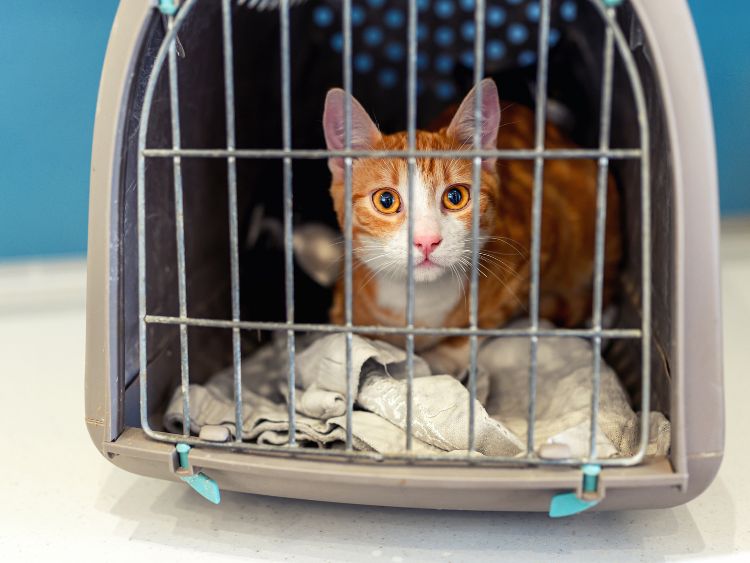Transporting cats can be a daunting task for both feline owners and their furry companions. Whether it’s a trip to the veterinarian, a relocation, or a holiday journey, ensuring the safety and comfort of your cat during travel is paramount. Cats are known for their sensitivity to change and unfamiliar environments, making it essential to plan and prepare adequately for any travel situation. Here, we’ll discuss expert tips and techniques to make transporting your cat a stress-free experience for both of you.
- Invest in a Quality Carrier:
The foundation of safe cat transportation is a sturdy and secure carrier. Opt for carriers that are spacious enough for your cat to stand, turn around, and lie down comfortably. Ensure that the carrier has proper ventilation and a secure locking mechanism to prevent escapes. Familiarize your cat with the carrier by leaving it open in your home and placing treats or favorite toys inside to create positive associations.
- Gradual Acclimation:
For cats who are not accustomed to travel, gradual acclimation to the carrier and the car environment is crucial. Start by allowing your cat to explore the carrier at home, gradually increasing the time spent inside. Once your cat is comfortable with the carrier, introduce short car rides around the neighborhood to help them get used to the motion and sounds of the vehicle.
- Create a Comfortable Environment:
Make the carrier as inviting as possible for your cat by lining it with familiar bedding or clothing that carries your scent. Additionally, consider using synthetic pheromone sprays or diffusers, such as Feliway, to reduce stress and promote a sense of calm during travel. Avoid feeding your cat a large meal before travel to prevent motion sickness, but offer small treats or a light snack to keep them comfortable.
- Secure the Carrier:
When traveling by car, always secure the carrier with a seatbelt or place it in a well-ventilated area away from direct sunlight. Avoid placing the carrier in the trunk or on the front seat, as sudden stops or accidents could pose a risk to your cat’s safety. Covering the carrier with a light blanket or towel can help minimize visual stimuli and create a cozy retreat for your cat.
- Plan for Breaks:
Long journeys require strategic planning to ensure your cat remains comfortable and stress-free. Plan regular breaks every few hours to allow your cat to stretch their legs, use the litter box, and hydrate. When stopping, keep the carrier in a quiet and secure area away from traffic and other animals. Offer your cat fresh water and a chance to explore their surroundings on a leash if they are comfortable doing so.
- Monitor Temperature:
Cats are sensitive to extreme temperatures, so it’s essential to regulate the temperature inside the car during travel. Avoid leaving your cat unattended in a parked car, especially in hot weather, as temperatures can quickly rise to dangerous levels. In cold weather, provide warm bedding and consider using a heated pad inside the carrier, but ensure it’s set to a safe temperature to prevent overheating.
- Minimize Noise and Distractions:
Reduce noise and distractions inside the car to create a calm and peaceful environment for your cat. Play soft music or white noise to mask external sounds, and avoid sudden loud noises or abrupt movements. Keep conversations with passengers to a minimum and refrain from opening windows or sunroofs, as drafts and unfamiliar scents can cause anxiety for your cat.
- Prepare for Emergencies:
Despite careful planning, emergencies can still arise during travel. Pack a travel kit containing essential supplies such as food, water, medications, a first-aid kit, and your cat’s medical records. Research emergency veterinary clinics along your route and program their contact information into your phone. Additionally, consider microchipping your cat and ensuring they wear a collar with an ID tag containing your contact information.
Conclusion:
Transporting cats with ease requires careful planning, patience, and attention to detail. By investing in a quality carrier, gradually acclimating your cat to travel, and creating a comfortable environment, you can minimize stress and ensure a safe journey for your feline companion. Remember to monitor temperature, minimize noise and distractions, and prepare for emergencies to mitigate any potential risks. With these expert tips, you can make transporting your cat a positive and stress-free experience for both of you. If you’re in need of professional assistance, consider utilizing a reliable cat taxi service for added convenience and peace of mind.







